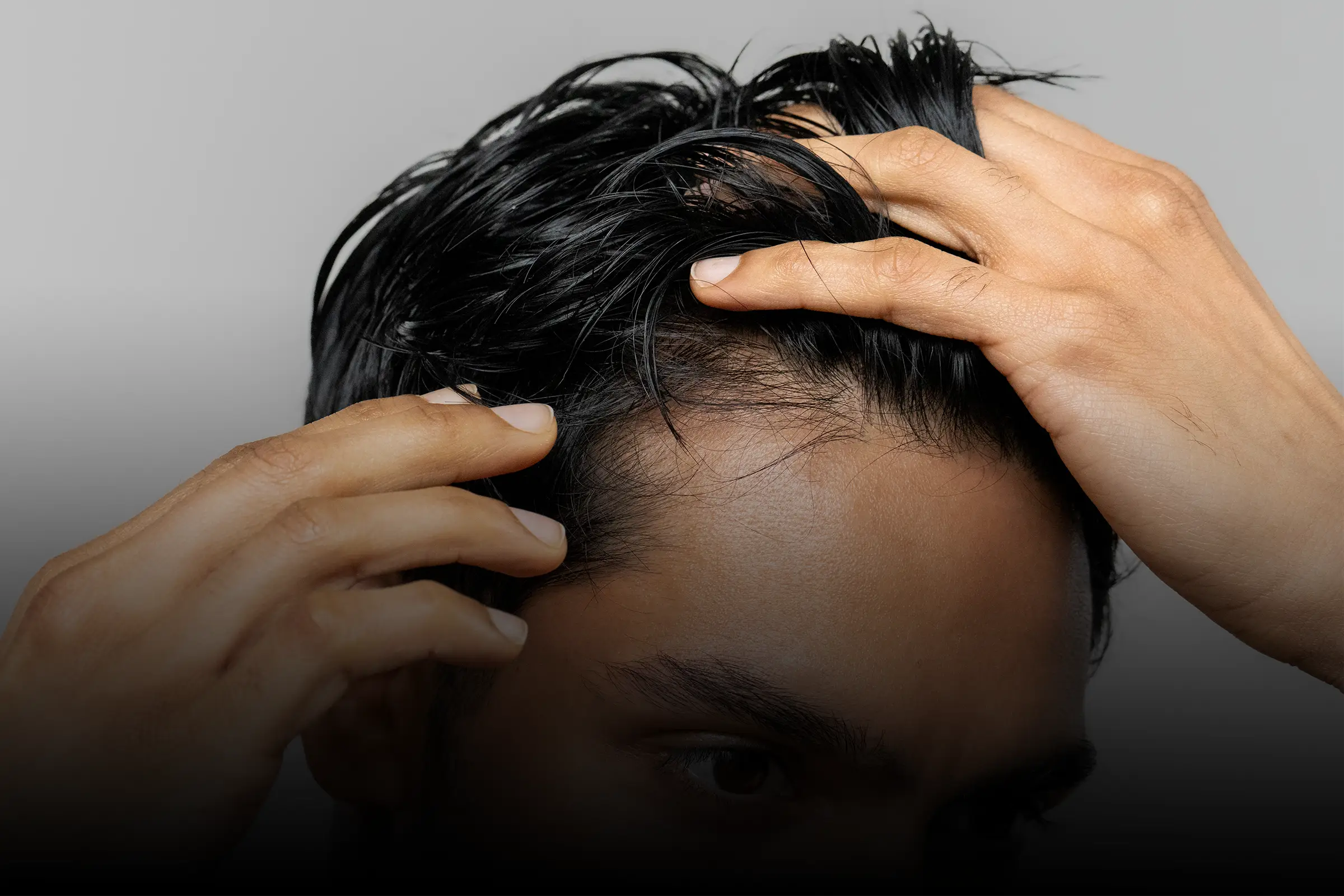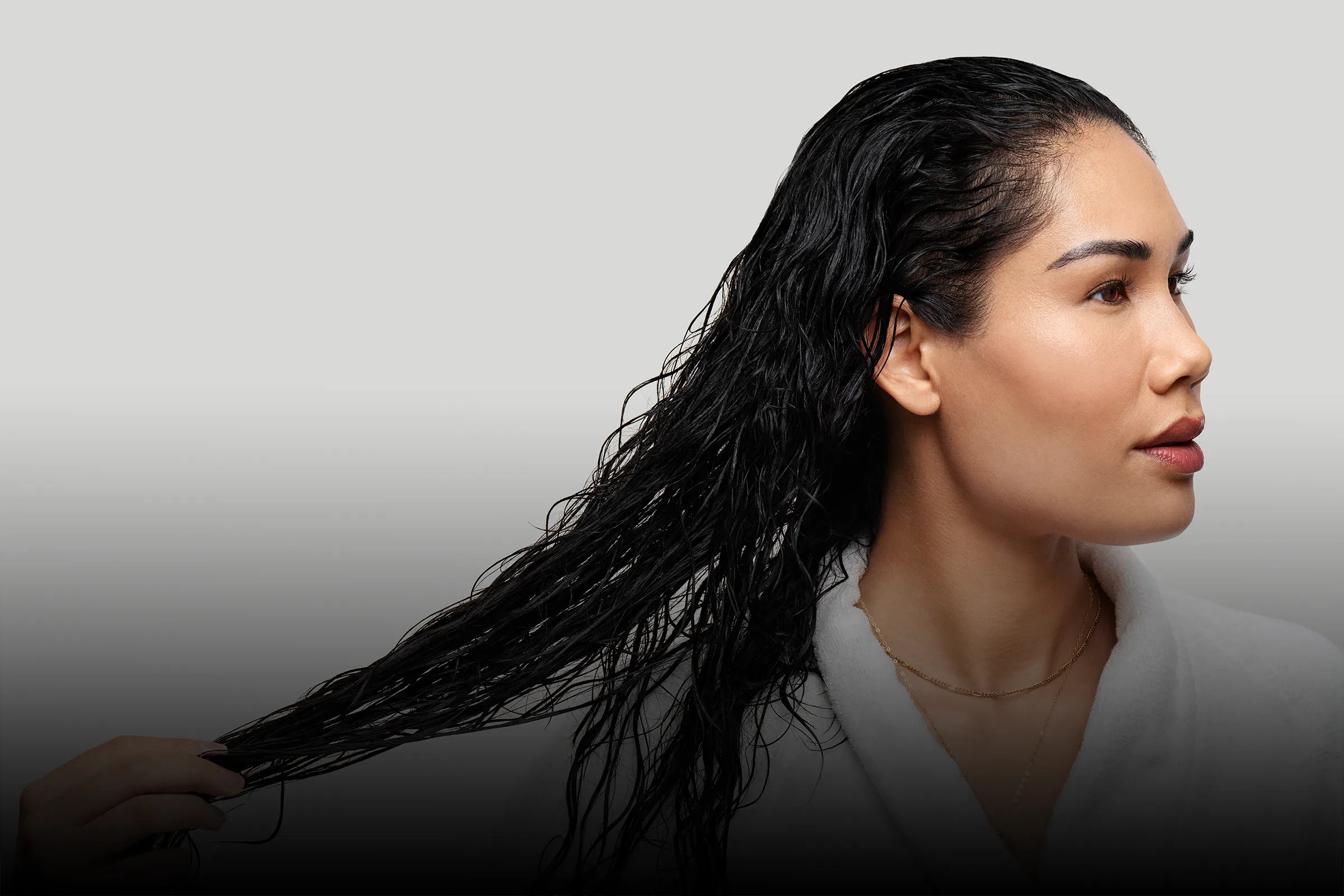Female hair loss is a complex issue with many possible causes that can affect women at any stage in life. Although thinning hair can be difficult to talk about, it’s important not to ignore it. Studies have shown that when women experience hair loss, it can have a greater negative effect on their quality of life compared to men (Cartwright et al., 2009). In some cases, hair loss in women can even indicate an underlying health issue.
Our goal is to provide an overview of the most common causes of hair loss in younger and older women, how you can start to identify and differentiate between these causes and discuss how they may be prevented and treated. For the best care, we recommend that you connect with a doctor who will work with you to understand your needs and provide expert guidance and support on how to manage your hair loss.
What are the causes of hair loss in women?
The most common causes of hair loss in women are telogen effluvium and female androgenetic alopecia, also referred to as female pattern hair loss. Additionally, you may also have heard about cicatricial (scarring) alopecias and traction alopecia. These hair loss disorders are less common but are important to be aware of.
Compared to older women, younger women are more likely to experience hair loss in the form of telogen effluvium. Telogen effluvium is a stress-triggered form of hair loss that can be caused by emotional stress, starting new medications or a sudden change in health. It’s also not uncommon for women to experience increased shedding in the months immediately following childbirth (postpartum hair loss). This type of hair loss is actually a form of telogen effluvium.
Telogen effluvium occurs when there is a disruption to the hair growth cycle. In general, hair loss due to telogen effluvium starts approximately 3-4 months after exposure to a trigger, or triggering event (Rebora, 2019). This characteristic delay in shedding can help differentiate telogen effluvium from other types of hair loss.
Treating telogen effluvium begins with identification and management of triggers. In many cases, it’s a self-limiting condition that will resolve on its own without the need for specific intervention. If telogen effluvium becomes chronic (i.e., persists for more than 6 months), you’ll want to check in with your doctor to ensure that other possible causes for continued hair loss are identified.
Scarring, or cicatricial alopecias involve the permanent destruction of hair follicle stem cells by the body’s inflammatory and immune response, which prevents new hairs from forming. This can lead to the formation of bald patches across the scalp which unfortunately do not grow back. If hair loss is concentrated primarily at the hairline, this may indicate a specific type of cicatricial hair loss called frontal fibrosing alopecia.
Treatment of scarring alopecias will vary depending on the underlying cause and may include taking antibiotics or anti-inflammatory medications. Unfortunately, the response to these medications can vary quite a bit from patient to patient.
Traction alopecia is also frequently observed in younger women. Unlike the other types of hair loss mentioned, traction alopecia is caused by habitual pressure being applied to the hair and may be worsened by tight hairstyles or hair accessories. Treatment usually involves adopting hair styling practices that help release tension on the hair and scalp, allowing hairs in affected areas of the scalp to slowly grow back. Depending on your hair loss, you may also consider adding a hair growth treatment to the affected areas to help the process along.
Female pattern hair loss is most prevalent in older women but can still occur in younger women if they’re genetically predisposed. It’s a progressive hair loss disorder which involves changes in hormone production and metabolism that are detrimental to hair growth.
The specific causes of female pattern hair loss are still being investigated, but scientists believe that the hormone dihydrotestosterone (DHT), which is responsible for pattern hair loss in men, may play a role. It’s also possible that changing estrogen levels (e.g., during menopause) contribute to the development of this type of hair loss.
DHT initiates a process called follicular miniaturization which causes hair follicles to shrink over time. This impedes the development of hair and can lead to thinning and the development of bald patches. Female pattern hair loss tends to manifest as a slowly widening hair part that can spread into diffuse thinning across the entire scalp. Early signs include a reduction in hair volume, noticeable when pulling the hair back into a ponytail, or more hair loss than usual during regular styling and hair maintenance.
The good news is that female pattern hair loss is treatable, with early detection being important to the success of treatment. Minoxidil, 5-alpha reductase inhibitors such as finasteride and dutasteride and anti-androgen medications like spironolactone, have been studied in the treatment of pattern hair loss in women with positive hair growth results. Non-pharmaceutical alternatives include low-level light therapy and platelet-rich plasma therapy. There is varying evidence to support these treatments, but you can speak to your doctor about whether these may be useful adjunctive therapies in your specific case.
What medical conditions cause female hair loss?
Certain illnesses, infections and medical conditions have been known to cause hair loss in women. Examples include polycystic ovarian syndrome (PCOS), lupus, COVID-19, thyroid disorders, dietary deficiencies or even undergoing a major surgical procedure. Female hair loss can be secondary to hormonal, immune or metabolic changes that arise because of these conditions.
As an example, during illness or an active infection, the immune response is heightened. This is an essential step in the body’s recovery process but the increase in inflammatory molecules can temporarily halt the growth of hair follicle cells (Hussain et al., 2021). Additionally, infections such as COVID-19, may also affect blood circulation to the scalp and reduce the oxygen and nutrient supply to the hair, impeding hair growth (Seyfi et al., 2022). Once the illness resolves, hair usually starts to grow back within 3-6 months.
In the case of chronic health conditions such as PCOS or hypothyroidism, which are defined by hormonal imbalances that can have an impact on hair growth, treatments that correct the underlying hormonal imbalance may have a secondary effect of helping to re-regulate the hair growth cycle. If you have a chronic health condition and are worried about hair loss, you may want to share these concerns with your doctor to see if an additional hair loss treatment is needed.
How to treat causes of hair loss in women
Whether female hair loss warrants treatment depends on the cause. As mentioned above, some forms of telogen effluvium don’t require any specific intervention. However, if a more specific trigger is involved (e.g., poor nutrition, medication or stress), resolving or alleviating the trigger often results in hair regrowth.
If the cause of hair loss is female androgenetic alopecia or a scarring alopecia, your doctor may recommend pharmacological treatment with agents that target the underlying issue, whether that’s elevated sex hormone levels or an overactive inflammatory response. These treatments can be very specific, so it’s important to involve a healthcare professional in treatment planning.
One last thing: if you do decide to begin hair loss treatment, you should know that some patients experience increased shedding in the first few weeks of treatment. This is normal and you can read on to find out more about finasteride shedding and minoxidil shedding. Once your hair follicles adjust to treatment, you should start to see results.
Causes of hair loss in women: Takeaway
Female hair loss can be triggered by a multitude of factors and because of its complex nature, should be carefully and thoughtfully investigated by a doctor. Hair loss can affect women at any age, but the incidence of some hair loss disorders such as female pattern hair loss, notably increases with age. In most cases, causes of female hair loss are treatable. But they do require correct and prompt identification.
If you’re experiencing hair loss, you don’t need to navigate this issue alone. At XYON, our goal is to connect patients with specialist physicians who are passionate about hair and improving your quality of life and offer tailored treatment plans to help you reach your goals. You can start a consultation to learn more about your options.

























